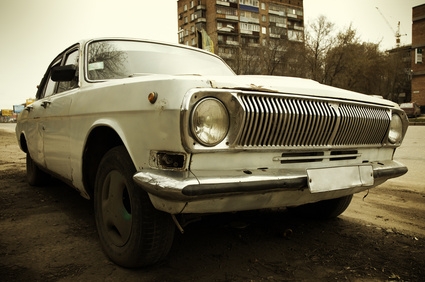
A little known maintenance part on most automobile engines is called the freeze plug. Because water expands when it freezes, in adverse conditions freezing coolant can crack and destroy an engine block. Freeze plugs are designed to allow coolant expansion in the event it freezes within the block. In older engines, or when an engine is rebuilt, these freeze plugs should be replaced.
The main freeze plugs in a Dodge 360, and the easiest freeze plugs to locate, are found along the external motor surfaces adjacent to each cylinder. Coolant is channeled through the engine block around each cylinder. A freeze plug exists on the outside of the motor giving access to these coolant channels. While locating the plugs is not difficult, gaining access to them can be. These freeze plugs are located underneath the exhaust manifold on each side of the engine.
A single, large, camshaft freeze plug is located on the front side of the engine, above the timing chain flywheel. Almost twice the size of the individual cylinder freeze plugs, the camshaft freeze plug gives access to the coolant which is routed through the front of the engine.
The cylinder freeze plugs are approximately the size of a U.S. half-dollar. The larger camshaft freeze plug is twice the size of the cylinder plugs. The oil gallery press-in freeze plugs are closer to the size of a dime, and more difficult to locate. These freeze plugs will be found around the lower surfaces of the engine. A total of seven small freeze plugs are located between the height of the cylinder freeze plugs and the bottom edge of the motor block which receives the oil pan.
The three types of freeze plugs listed above are constructed out of thin, stamped steel or brass. They resemble an inverted bottle cap with smooth sides. Five additional oil gallery screw-in freeze plugs exist along the lower surface of the engine as well. These plugs are less likely to require replacing, as they are threaded into the motor block rather than pressed in.